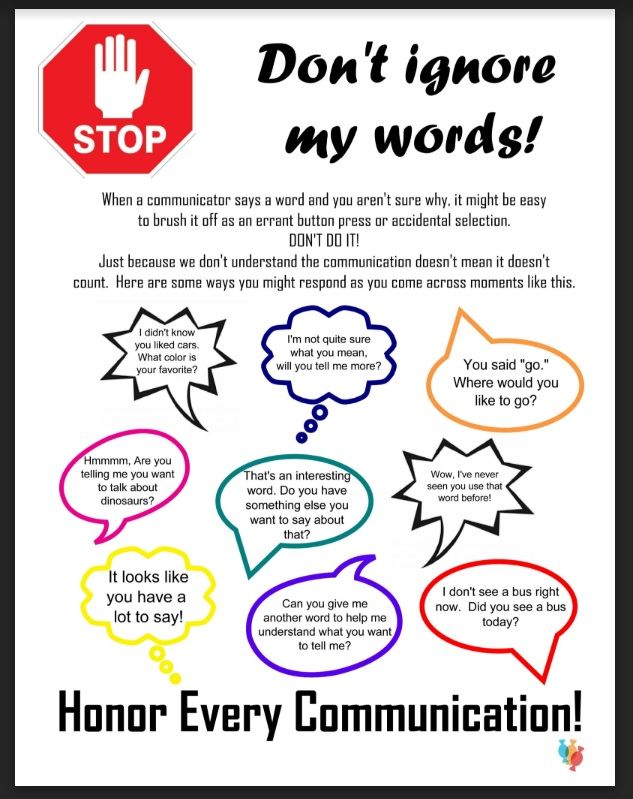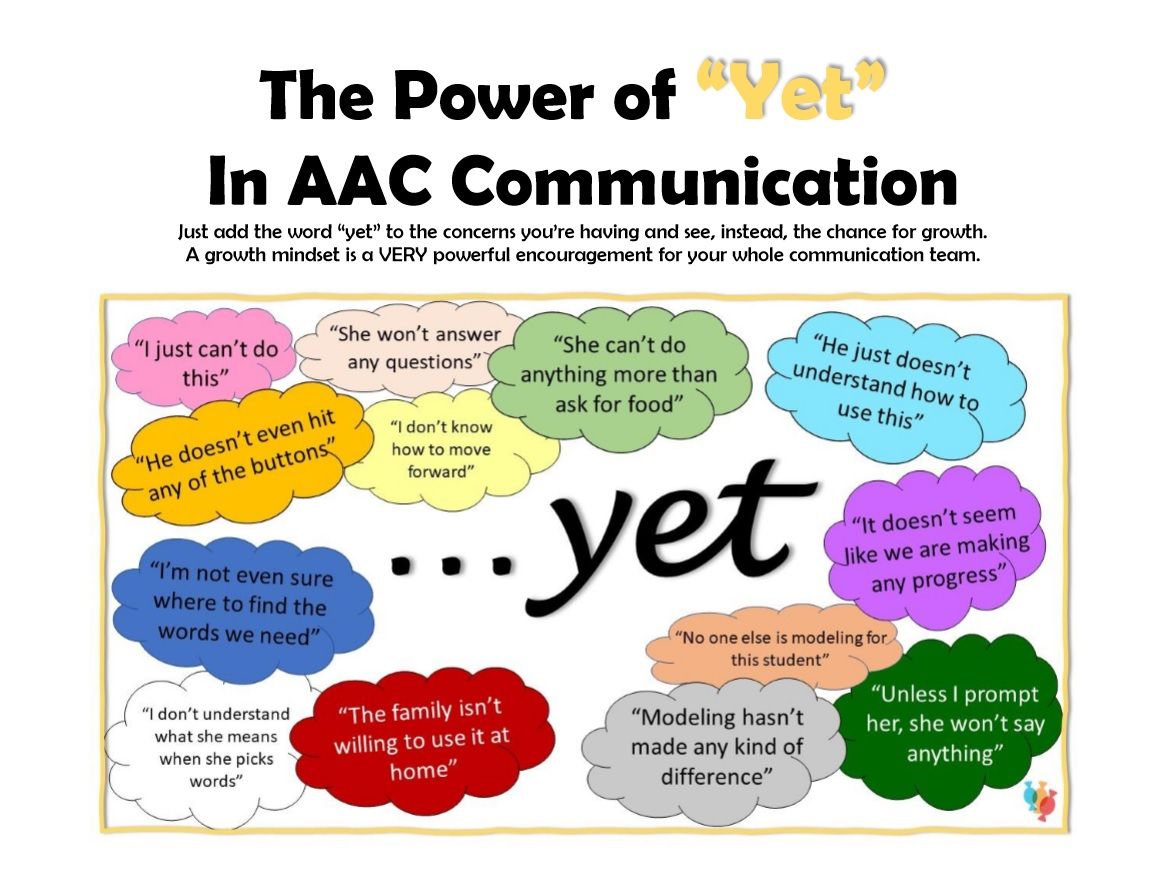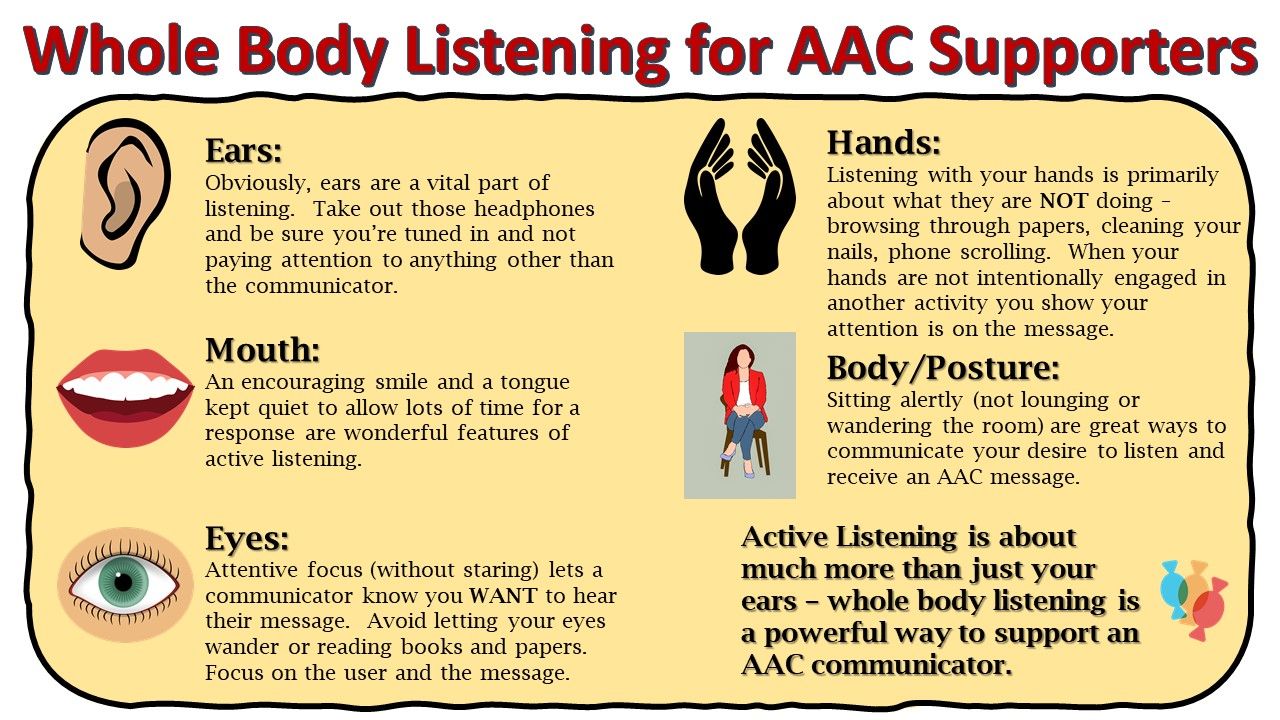10 AAC Tips for teachers
September finds many of us back in the classroom. If your clutch of students includes an AAC user, these 10 basic Tips for Teachers might be just what you need to support and grow communication as school comes back into session.
- Incorporate AAC into any and every classroom activity
AAC is not a learning activity in itself, it is a way to communicate and communication should be part of everything that happens. Model words during reading, music, art, science, etc. Display a poster sized core board and let any student use it. Core vocabulary can usually be connected to lessons on any topic. Don't push aside an AAC communicator to work with them later, help them be included as part of whatever lesson or activity is happening as part of the class. - Don't limit AAC access
Communication happens everywhere, so AAC needs to be available everywhere. That means whether you're on the playground, in the cafeteria, at the library, on the bus, in the bathroom an AAC option should be ready to go. This might be a high tech device or a light tech printout of a speech board. Whatever type you use, demonstrate and accept AAC communication in every situation. - Keep a Charger or Backup Power Source on Hand
A speech device is only helpful if you can turn it on. While an AAC user should ALWAYS have access to their device, we have to keep the device charged in order for that to be an option. Have a battery back-up charged and ready to go and be sure to keep a charger close by just in case. - Connection First
Communication is about connections – one person reaching out and touching the life of another. Communication growth happens best when and AAC user and supporter understand and trust each other. Take a bit of time each session to talk favorites or experiences and get to know each other. This helps supporters know topics that might best encourage speech and helps communicators see that AAC means more than tapping some buttons. - Know the Device
It's hard to model language or support speech if you don't know where to find the words within the board set. It's good for you and your communicator to each have the chance to wander around the communication set and get to know where things are. Use the "search" feature if there is one to find specific options and explore the word options on your own device (if you are using a cloud-based option like CoughDrop). - Honor Every Communication
Do not ignore or push aside words spoken by AAC users even if they seem accidental, insignificant, or out of context. For many AAC users, it is difficult to make button selections – especially at first. You show that you are focused and interested in their message when you validate every communication even if you don't understand fully. - Expect Speech (sometimes ill-timed) From the Speech Device
Young children babble and explore language regularly when they start to learn to speak. We don't expect a budding verbal speaker to remain silent until we ask them a question. We acknowledge that they will sometimes speak at an imperfect time. AAC users are no different. As they start to gain confidence and understanding in the device, they may sometimes speak out during class or vocalize in a way that may not seem to fit the situation. DO NOT take away the speech device to force them to be quiet. That is no different than covering the mouth of a young speaker. Encourage and teach appropriate behavior, correct and guide when needed, but DO NOT take away a person's way to communicate. - Take it One Step Further
As your communicator shares words and messages using AAC, help them stretch their language and understanding by expanding on their communication. If they say "bird" you might use the device to say "yes, yellow bird." If they say "eat" you might reply "What do you want to eat" or "we can eat lunch." If the AAC user generally speaks in one word comments, try to respond with two or three words to model the next step. - DON'T Hurry Up
AAC takes time and focus for the communicator. We must allow PLENTY of time for response when we are asking questions, seeking information, or just conversing. An AAC user needs time to process the message, plan a response, locate the needed buttons, and then share the message. This process takes time – often more time that we realize. Take a breath and give your communicator the gift of time. In your mind, count at least a slow 10 seconds before you prompt or speak again. Waiting helps many communicators realize their message is important and worth waiting for. - Give Up on Being Perfect
You will mess up. You will get impatient. You will forgot to model. You will plan a lesson that falls flat. Let it go. Yes, supporting an AAC communicator is a big responsibility and an important opportunity. But being a great communication partner doesn't mean doing everything exactly right all the time. The most important thing you can do is to sincerely care about the communicator, let them see you for who you are, and make the kind of connections that keep the lines of communication open.



